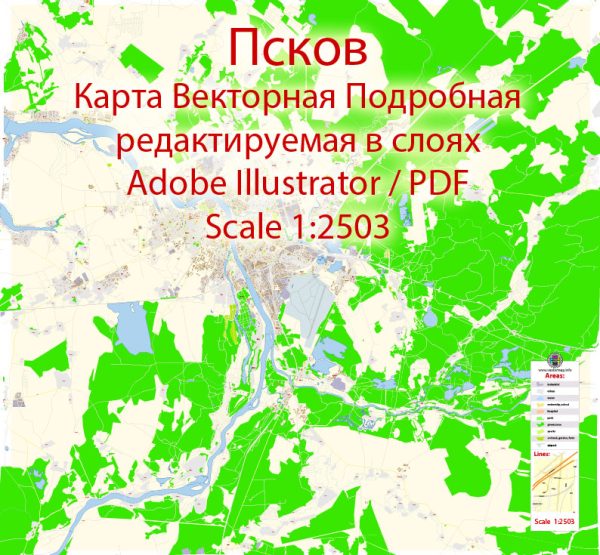Pskov is a historic city located in western Russia, near the border with Estonia. It is known for its rich architectural heritage, which reflects the city’s long history and its role as a center of trade and culture in the region. Here is a description of the architecture in Pskov:
- Krom: The Pskov Krom is a medieval fortress that dominates the city’s skyline. It is a massive stone fortress with high walls and defensive towers. The Krom is one of the most important architectural landmarks in Pskov and serves as a symbol of the city’s historical significance.
- Churches: Pskov is home to numerous churches, each with its own unique architectural style. The city’s churches range from the simple and austere to the more ornate and decorative. Many of these churches are made of stone, and their architectural designs often feature elements of Byzantine and Russian Orthodox architecture.
- Domes and Cupolas: Russian Orthodox churches in Pskov typically feature colorful domes and cupolas. These domes are often topped with crosses and can be quite elaborate, adding to the city’s architectural charm.
- Merchant Houses: Pskov’s history as a trading city is reflected in the architecture of its merchant houses. Some of these historic buildings, known as “псковская городская резьба” (Pskov city carving), are adorned with intricate wooden carvings, and their architecture combines both Russian and European influences.
- Kremlin Walls: In addition to the Krom, Pskov’s Kremlin is encircled by thick stone walls that served as a defensive structure in the past. The walls include towers and gates, and they contribute to the city’s overall architectural character.
- Wooden Architecture: While stone architecture is prominent in Pskov, wooden architecture also plays a significant role in the city’s heritage. Traditional wooden houses can still be found in some areas, and these often feature ornate carvings and decorative elements.
- Pskov Region Vernacular Architecture: The surrounding Pskov region is known for its distinct vernacular architecture, which includes log houses and farm buildings. These structures are typically made of wood and reflect the architectural traditions of the area.
- Soviet Era Architecture: Like many Russian cities, Pskov also has examples of Soviet-era architecture, which includes utilitarian buildings and apartment blocks. These buildings represent a different phase in the city’s history.
Pskov’s architectural diversity reflects its long history as a regional center and a hub for trade and culture. The city’s blend of medieval fortifications, Orthodox churches, traditional wooden architecture, and Soviet-era buildings offers a fascinating glimpse into the changing face of Russia through the centuries.


 Author: Kirill Shrayber, Ph.D.
Author: Kirill Shrayber, Ph.D.